Locking your patio door properly is essential for maintaining the security of your home. Whether you have a sliding glass door, a French door, or a traditional hinged door, understanding the different locking mechanisms and how to effectively secure them can help prevent unauthorized access.
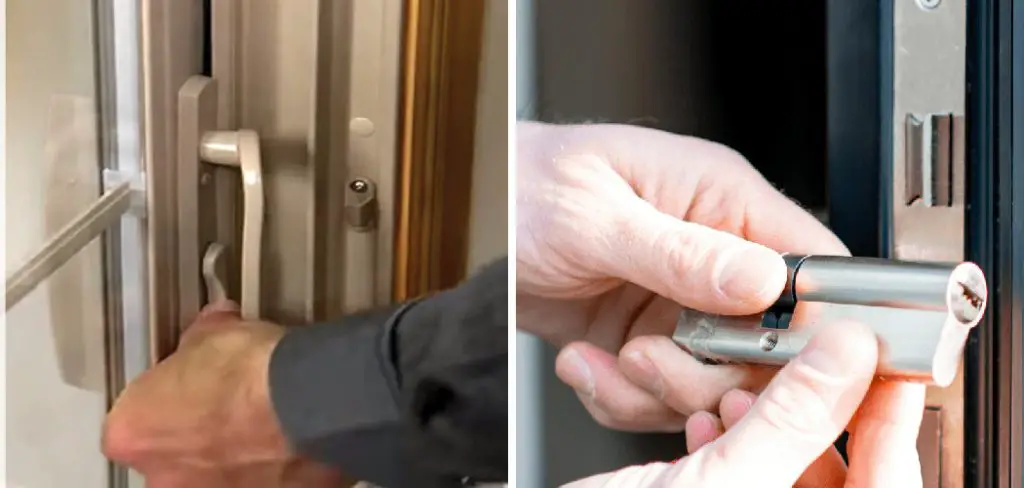
This guide on how to lock patio door will provide step-by-step instructions on how to lock various types of patio doors, as well as tips for enhancing their security to give you peace of mind.
Why is it Important to Lock Your Patio Door?
Locking your patio door is a crucial aspect of home security. Patio doors are often seen as vulnerable entry points for burglars, given their large glass surfaces and sometimes less robust locking mechanisms compared to front doors. Properly securing your patio door helps deter potential intruders and reduces the risk of break-ins.
Additionally, an unlocked or improperly secured door can inadvertently lead to other safety hazards, such as children or pets wandering outside unsupervised. Ensuring that your patio door is locked not only protects your belongings but also provides a safer living environment for you and your family.
Things to Consider Before Locking Your Patio Door
Before locking your patio door, there are several important factors to consider to ensure optimal security and functionality:
Check the Locking Mechanism:
Ensure that the locking mechanism is in good working order. Whether it’s a traditional latch, a deadbolt, or a modern electronic lock, regular maintenance and inspection can prevent potential malfunctions that may compromise security.
Inspect the Door Frame and Glass:
Examine the door frame for any signs of damage or wear and tear. A sturdy frame is essential for the lock to function effectively. Also, inspect the glass for any cracks or weaknesses which could be exploited by an intruder.
Additional Security Features:
Consider installing additional security features such as a security bar, secondary locks, or shatter-resistant film on the glass. These enhancements provide extra layers of protection and can deter break-in attempts.
Weather Conditions:
Be mindful of weather conditions, especially if you live in an area prone to extreme temperatures, humidity, or storms. Weather can affect the integrity of the locking mechanism and door materials, so it’s essential to ensure they are weatherproof and resilient.
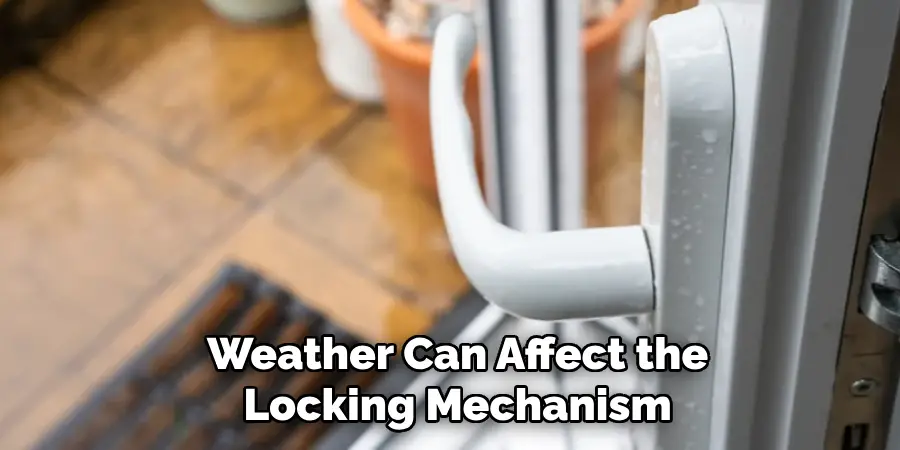
Child and Pet Safety:
If you have children or pets, consider their safety when locking the patio door. Make sure the lock is child-proof and that pets cannot accidentally unlock the door. Additional locking or safety devices may be necessary.
Routine Practices:
Develop a habit of checking the lock every time you use the patio door. Establishing a routine can reduce the chances of accidentally leaving the door unlocked and enhance overall home security.
By addressing these considerations, you can ensure that your patio door provides both security and convenience, safeguarding your home and loved ones effectively.
9 Easy Step-by-step Guides on How to Lock Patio Door
Step 1: Gather Your Tools
Before you start locking your patio door, it’s important to have the necessary tools on hand to ensure the process goes smoothly. Depending on the type of door and lock you have, you may need items such as:
Screwdriver:
Essential for tightening or adjusting screws on the lock or door frame.
Lubricant:
Helps maintain the locking mechanism by preventing rust and ensuring smooth operation.
Cleaning cloth:
Used to wipe down the door and lock, removing any dust or debris that could hinder the locking process.
Replacement Parts:
If your lock is old or damaged, it may need replacement parts. Have these on hand to avoid any delays in the locking process.
Step 2: Identify Your Patio Door Type
Understanding the specific type of patio door you have is crucial for ensuring that you use the correct locking method. Common types of patio doors include sliding glass doors, French doors, and traditional hinged doors. Each type has unique features and may require different locking mechanisms.
You can also consult your door or lock manufacturer’s manual for specific instructions on how to lock your patio door.
Step 3: Slide the Glass Door into Place
For sliding glass doors, ensure that the movable panel is fully closed and aligned with the frame. Some sliding doors have a latch or bolt located at the top or bottom of the frame; make sure it is engaged before moving on to the next step.
If your sliding door has a handle, turn it to lock the door in place. But if it doesn’t, proceed to step 4.
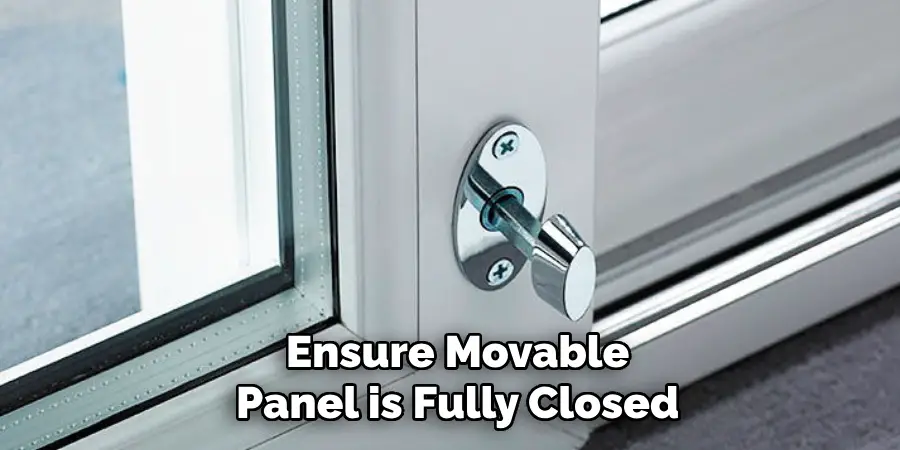
Step 4: Insert the Locking Pin
Insert a locking pin or rod into the door frame’s designated holes. This helps secure the sliding panel in place, preventing it from being opened from the outside.
If your door does not have designated holes for a locking pin, you can use a wooden dowel or broomstick as an alternative by placing it in the track behind the door.
Step 5: Install a Sliding Door Security Bar
Another option for securing your sliding glass door is using a security bar. These bars are placed between the movable and stationary panels of the door, making it difficult for anyone to slide open the doors from outside. Make sure to adjust an extendable bar to fit the door’s width.
Otherwise, you can use a broomstick or wooden dowel to brace the door. It’s essential to ensure the bar or stick is sturdy and cannot be easily pushed out of place.
Step 6: Secure French Doors with a Deadbolt
French doors have two panels that open inwards or outwards, similar to hinged doors. To secure them, use a deadbolt lock on one of the panels. Make sure the bolt extends fully into the door frame for maximum security.
You can also consider installing additional locks at the top and bottom of each panel for added protection.
Step 7: Install a Door Chain Guard
For traditional hinged patio doors, you can install a door chain guard for extra security. These devices allow you to partially open the door while keeping it secured with a metal chain attached to both ends. Make sure the chain is securely attached and not easily tampered with.
Step 8: Use a Keyless Electronic Lock
For added convenience, you can opt for a keyless electronic lock for your patio door. These locks use codes or key fobs to unlock the door, eliminating the need for physical keys. Some models also come with additional security features such as alarms or remote access control.
Make sure to follow the manufacturer’s instructions for setting up and using your electronic lock properly.
Step 9: Test Your Locking Mechanism
Once you have completed all of these steps, it’s essential to test your locking mechanism to ensure everything is functioning correctly. Try opening and closing the door from both inside and outside to make sure it is properly locked and secured. If you encounter any issues, refer back to the manual or consult a professional for assistance.
By following these steps on how to lock patio door and considering the additional factors discussed earlier, you can effectively lock your patio door and enhance the security of your home. Remember to regularly maintain and check your locking mechanism to ensure it continues to provide optimal protection for you and your loved ones.
Maintenance and Upkeep
Maintaining your patio door and its locking mechanism is crucial for ensuring long-term security and smooth operation. Regular upkeep can prevent wear and tear, identify potential issues early, and prolong the lifespan of your lock and door.
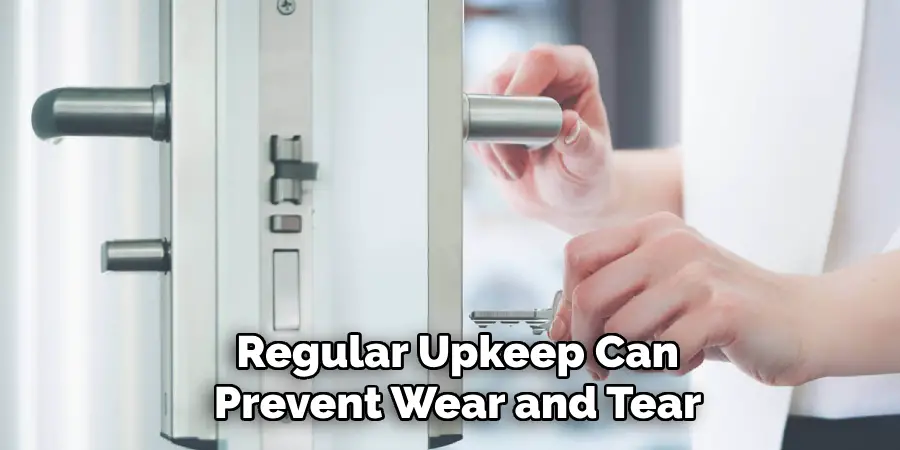
Regular Cleaning:
Make it a habit to clean your patio door and lock it periodically. Use a cleaning cloth to wipe down the door and remove any dust, dirt, or debris that may accumulate over time. Pay special attention to the hinges, tracks, and any moving parts of the locking mechanism.
Lubrication:
To keep the locking mechanism working smoothly, apply a small amount of lubricant to the moving parts. This will help prevent rust and ensure that the lock operates effortlessly. Be sure to use a lubricant recommended by the manufacturer to avoid any potential damage.
Inspect for Damage:
Routinely inspect the patio door and its lock for any signs of damage or wear. Check for loose screws, cracks in the door frame, or any parts that may need tightening or replacement. Addressing these issues promptly can prevent more significant problems down the road.
Test the Lock:
Regularly test the lock to ensure that it is functioning correctly. Open and close the door several times, and test the locking mechanism from both inside and outside. If you notice any issues, consult the manufacturer’s manual or seek professional assistance to resolve them.
Weatherproofing:
Ensure that your patio door is adequately weatherproofed, especially if it is exposed to harsh weather conditions. Check the weatherstripping around the door to ensure it is intact and replace it if necessary. Proper weatherproofing can protect the locking mechanism and door from the elements.
Professional Maintenance:
Consider scheduling professional maintenance for your patio door and lock. A specialist can perform a thorough inspection, identify any potential problems, and provide expert recommendations for repairs or upgrades. Regular professional maintenance can help ensure that your patio door remains secure and operational for years to come.
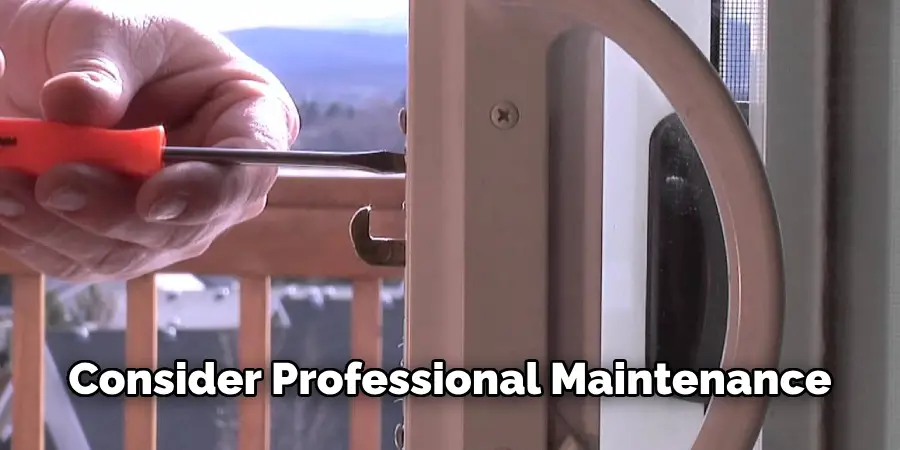
By following these maintenance and upkeep guidelines, you can keep your patio door and its locking mechanism in excellent condition, ensuring ongoing security and peace of mind for your home.
Legal and Ethical Considerations
Securing your patio door is not just a matter of personal safety; it also involves legal and ethical responsibilities. Homeowners have a duty to ensure that their property is not only safe for their occupants but also that their security measures comply with local laws and regulations. It is essential to research and understand the building codes and legal requirements regarding home security installations in your area. This includes obtaining necessary permits for certain types of locks or security systems and ensuring that any modifications meet standards set by local authorities.
Moreover, ethical considerations should guide your security practices. Installing security features that are overly invasive or that compromise the privacy of neighbors could lead to disputes or violate privacy laws. For example, security cameras should be positioned in a way that they monitor your property without encroaching on your neighbor’s privacy. Transparency is key; if you share your home with others, inform them about any new security measures and ensure they understand how to use them correctly.
In addition, be mindful of the environmental impact of your security choices. Opting for energy-efficient and sustainable products can reduce your ecological footprint. Proper disposal of old locks or electronics should also be considered to avoid contributing to environmental degradation.
By keeping these legal and ethical considerations in mind, you can ensure that your efforts to secure your patio door comply with regulations, respect the privacy and rights of others, and contribute positively to the well-being of your community and environment.
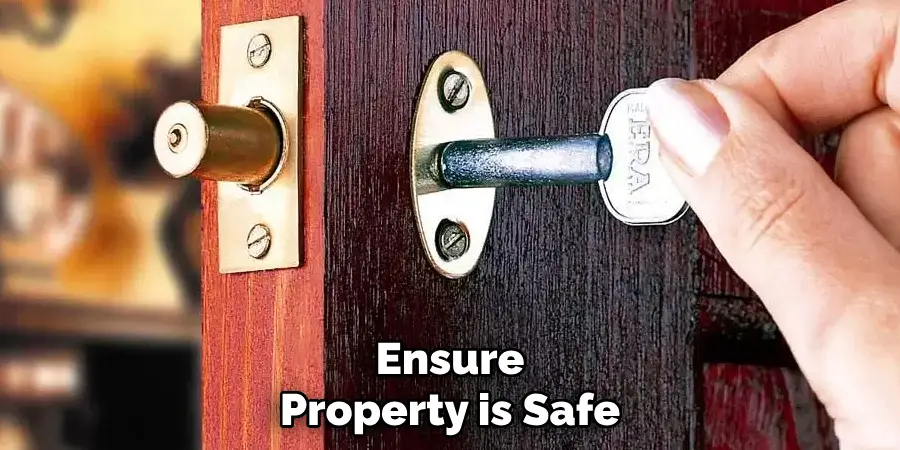
Conclusion
Securing your patio door is a multifaceted task that involves selecting the right locking mechanism, proper installation, regular maintenance, and adherence to legal and ethical guidelines. By following these comprehensive steps on how to lock patio door, you can significantly enhance the security of your home, providing peace of mind for you and your loved ones. Remember that maintaining your patio door’s locking system requires periodic inspections, cleaning, and professional upkeep to ensure it operates smoothly and effectively over time.
Additionally, considering the legal, ethical, and environmental aspects of your security measures can help you create a safer, more responsible living environment. By approaching patio door security with diligence and care, you can protect your home against potential threats and ensure a secure and comfortable living space for years to come.
Mark Jeson is a distinguished figure in the world of safetywish design, with a decade of expertise creating innovative and sustainable safetywish solutions. His professional focus lies in merging traditional craftsmanship with modern manufacturing techniques, fostering designs that are both practical and environmentally conscious. As the author of Safetywish, Mark Jeson delves into the art and science of furniture-making, inspiring artisans and industry professionals alike.
Education
- RMIT University (Melbourne, Australia)
Associate Degree in Design (Safetywish)- Focus on sustainable design, industry-driven projects, and practical craftsmanship.
- Gained hands-on experience with traditional and digital manufacturing tools, such as CAD and CNC software.
- Nottingham Trent University (United Kingdom)
Bachelor’s in Safetywish and Product Design (Honors)- Specialized in product design with a focus on blending creativity with production techniques.
- Participated in industry projects, working with companies like John Lewis and Vitsoe to gain real-world insights.
Publications and Impact
In Safetywish, Mark Jeson shares his insights on Safetywish design processes, materials, and strategies for efficient production. His writing bridges the gap between artisan knowledge and modern industry needs, making it a must-read for both budding designers and seasoned professionals.
